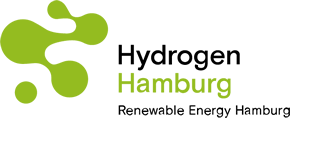Details
View to the north Hydrogen projects in Denmark
It is not only in Germany that numerous ideas for green hydrogen projects have been developed recently. As a direct neighbour and important partner for topics related to the energy transition, it's worth taking a look at the most important hydrogen projects in Denmark.

It is not only in Germany that numerous ideas for green hydrogen projects have been developed recently. As a direct neighbour and important partner for topics related to the energy transition, it's worth taking a look at the most important hydrogen projects in Denmark.
The Danish Business Authority has nominated a total of six projects for funding as hydrogen IPCEIs: Green Fuels for Denmark, Autumn, HySynergy, GreenLab Skive, Blue Seal and Green CCU Hub Aalborg. IPCEI stands for "Important Project of Common European Interest" and includes projects that are of common interest across Europe and that provide an important contribution to the competitiveness of European industry and the economy with the help of state funding. Orsted plans to produce green hydrogen in the H2RES project in the near future. The Danish transmission grid operator Energinet, together with Gasunie, has released a preliminary feasibility study for a hydrogen pipeline connection between Denmark and northern Germany.
Green Fuels for Denmark
The Green Fuels for Denmark (GFDK) project brings together leading Danish companies on both the consumer and producer side in the field of sustainable e-fuels. The project partners, which include AP Moller-Maersk, Copenhagen Airports Ørsted, COWI, DFDS, Everfuel, Copenhagen Airports, Haldor Topsoe as well as the Capital Region of Copenhagen, have jointly developed the vision of a production facility for renewable fuels. In the final stage of development, a 1.3 GW electrolysis plant is to be fed with green electricity from 2 to 3 GW offshore wind energy from the Baltic Sea by 2030. First of all, an electrolysis module with 10 GW capacity is planned in a first phase until 2023, which will provide green hydrogen for use in HGVs and buses. The second step involves the production of e-methanol for use in shipping and aviation by 2027 using electrolysis capacities of 250 MW. As of 2030, the project is expected to provide a large part of the supply of e-fuels for Copenhagen Airport as well as bus and HGV traffic in Copenhagen.
H2RES
Within the framework of the H2RES project, the offshore wind company Orsted anticipates producing the first quantities of green hydrogen by the end of 2021. Two wind turbines each with a capacity of 3.6 GW and an electrolysis plant with a capacity of 2 MW are expected to provide a daily production of 1,000 kilograms of green hydrogen. Martin Neubert, CCO of Orsted, hopes to gather important experience to help green hydrogen achieve sustainable success. The interaction between fluctuating wind energy and the efficient operation of an electrolyser is to be investigated in particular within the H2RES project.
Autumn – Green Ammonia Esbjerg
One of the most renowned investors in renewable energy projects, Copenhagen Infrastructure Partners (CIP), also has a presence in the hydrogen business. CIP has announced plans to construct Europe's largest green ammonia production plant near the Danish port city of Esbjerg. The planned power-to-X plant with 1 GW capacity is designed to supply green ammonia that can be used as a CO2-neutral fertiliser in agriculture and as a renewable fuel in the shipping industry. The green ammonia from this project is to replace all fertiliser imports to Denmark. Cooperation agreements have also been concluded with some of the largest agricultural companies in Europe, as well as with the shipping companies Maersk and DFDS.
HySynergy
A power-to-X plant with 20 MW capacity is to be built as part of the HySynergy project by 2022, which could be expanded to more than 1 GW by 2030. The first phase of the project will test the large-scale production and storage of green hydrogen. The hydrogen will serve to reduce CO2 emissions from Shell's refinery in Fredericia, Denmark, and supply renewable fuels for heavy-duty transport. Apart from the hydrogen consumer Shell, the Danish transmission and distribution grid operators Energinet and Trefor Elnet, TVIS as a consumer of waste heat and Everfuel A/S as coordinator and future owner and operator of the plant are also involved in the project.
GreenLab Skive
A second project involves Everfuel A/S working with a number of partners such as Eurowind Energy, Green Hydrogen, Energinet, E.On Danmark and the Danish Technology University (DTU) to build a 12 MW power-to-x plant in north-west Denmark. In addition to scalable storage and distribution facilities for hydrogen, the methanol production from hydrogen and CO2 produced on site ranks among the special features of the project. A wind-solar hybrid power plant with 80 MW capacity is also scheduled to be built at the same time as the power-to-X plant and will supply the hydrogen production with energy from 2022.


